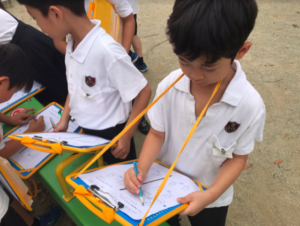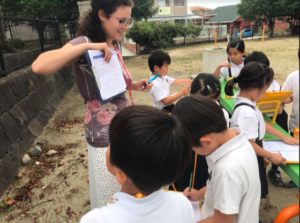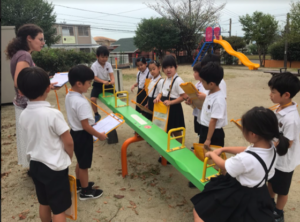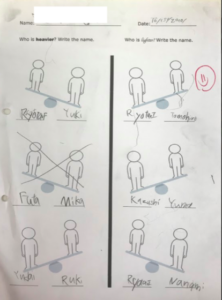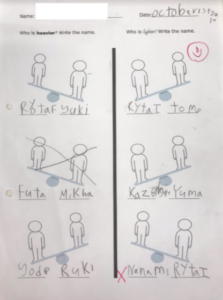概日リズム - 2年生 TDL
- /2年生
In our current TDL theme, we have been studying about Earth’s cycles circadian rhythms.
One thing that we have been investigating is the idea that our body is better at certain things at different times of the day. So we put it to the test to see for ourselves.
We tested our reactions, strength and coordination once in the morning, and again in the afternoon to see if there were any differences.
Our activities were:
- Catching a ball with alternating hands
- Dropping a ruler and catching it as quick as possible
- Holding on to a bar in the park for as long as possible (not shown in the photos)
The students really enjoyed seeing the limits of their bodies in these three categories. So much so that they want to practice and improve each of these traits!
According to our research, our bodies should perform better later in the day; our results generally confirmed this to be true: we found the students did actually perform better in the afternoon.
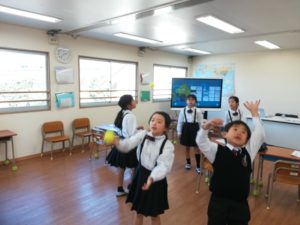
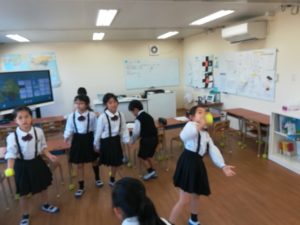
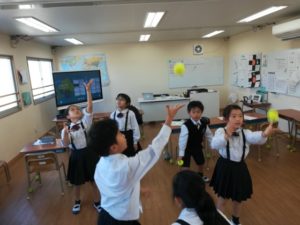
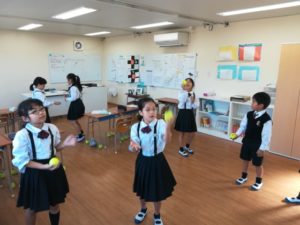
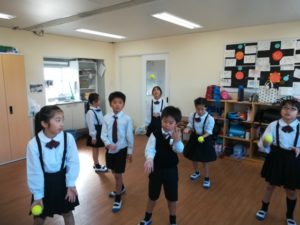
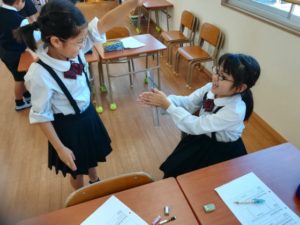
sdr
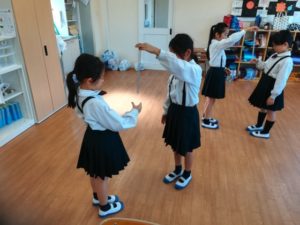
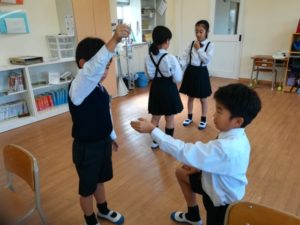
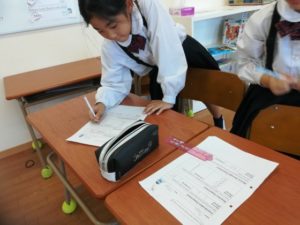
水の科学館遠足 - 2年生
- /2年生
Today Grade 2 went to the Water System Memorial Hall.
We received a lecture about where Kumamoto’s water comes from, how much we use in our daily lives, and ways to save water.
Grade 2 students were able to try three different types of water and try and guess which one was from Kumamoto.
Next, our guides took us through the complex to see what kind of water pumps Kumamoto uses.
Finally, we went to the memorial hall to see what the old pumps and pipes looked like, as well as to learn about what kind of work went into fixing the water system after the Kumamoto Earthquake.
After we thanked our guides, we met up with the Grade 1 class at the Water Science Museum. We had a picnic in the park and played on the swings there for a while until it was finally time to leave.
The students were very well behaved riding public transport despite being in transit over an hour.
All Grade 2 students really enjoyed the experience and have taken away a wealth of knowledge about Kumamoto’s water system.
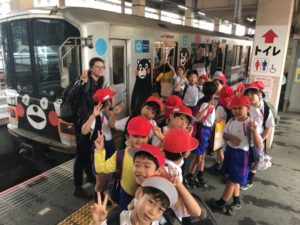
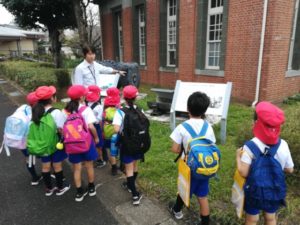

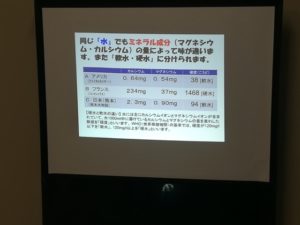
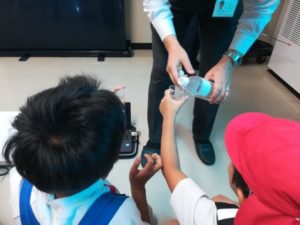
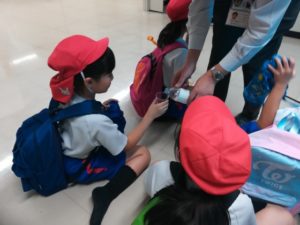
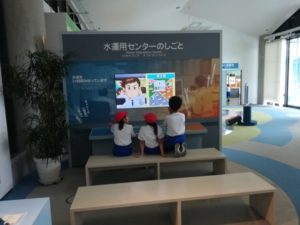
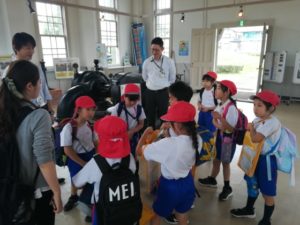
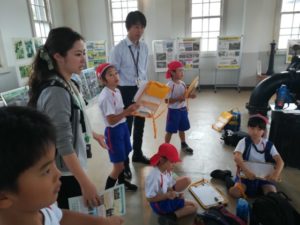
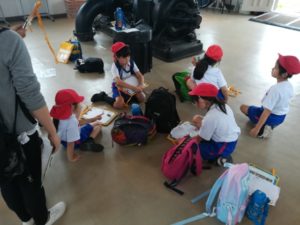
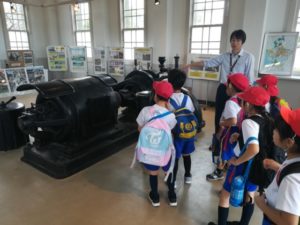
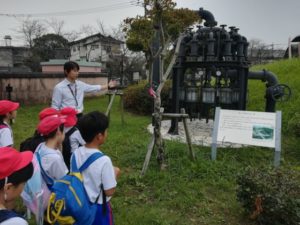
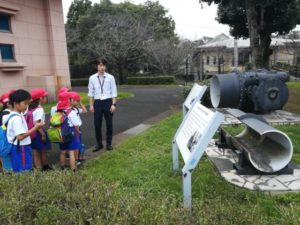

貯金箱 1年生 TDL
- /1年生
Our current TDL unit is the environment, pollution, and recycling. As part of our studies, we worked on a project that showed the students how to reuse, reduce, and recycle garbage in order to help keep our environment clean.
Instead of throwing out our school lunch milk containers, we washed them out carefully and made them into very cute, environmentally-friendly piggy banks! All grade 1 students had a lot of fun decorating their own piggy bank and thinking about what to do with all the coins they’re going to save!
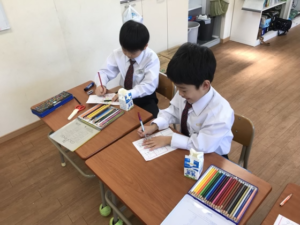
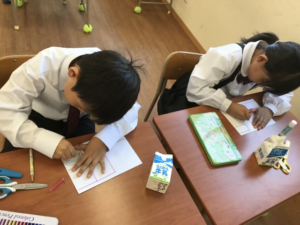
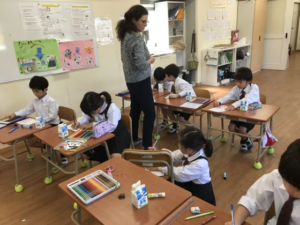
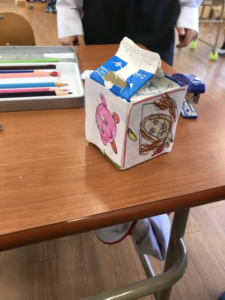
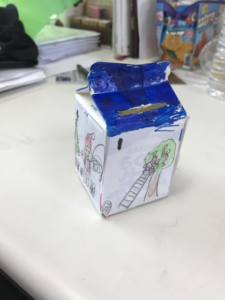
水の科学館遠足 - 1年生
- /1年生
Today we went on our second field trip, this time to the Water Science Museum. We rode the bus and the train to get to the museum, and once there, we broke into separate grade 1 and grade 2 groups. Grade 1 students learned about where the tap water in Kumamoto comes from. These activities tied in nicely to our TDL curriculum on pollution and natural resources, and the children could see first-hand what actually happens to dirty water and what the consequences of irresponsible water use are in our daily lives.
We were also able to enjoy a picnic outside (it didn’t rain, luckily!) and some delicious water that was gifted to us by the museum. All in all, a great day full of fun, learning, and new experiences!

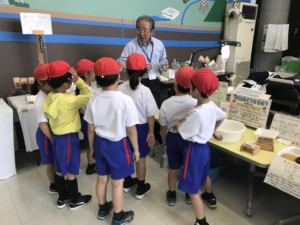
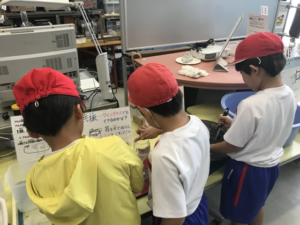




算数 - Math extension in the park - Grade 1
- /1年生
Since we are studying weight and the concept of “lighter”, “heavier”, “as heavy as…”, we spent some time in the park extending grade 1 math lessons to allow students to further apply what they are learning in the real world. After practicing in the classroom with a scale and various objects and units to measure weight, we decided to do a hands-on lesson and use the seesaw in the park in front of our school to review the concepts we learned all together!
The students took turns sitting on the seesaw to find out who is lighter or heavier, and we recorded the results. It was useful (not to mention very fun!) for the children to see how math is useful in real life, and how we can transfer what we learn in the classroom to actual first-hand experiences.

